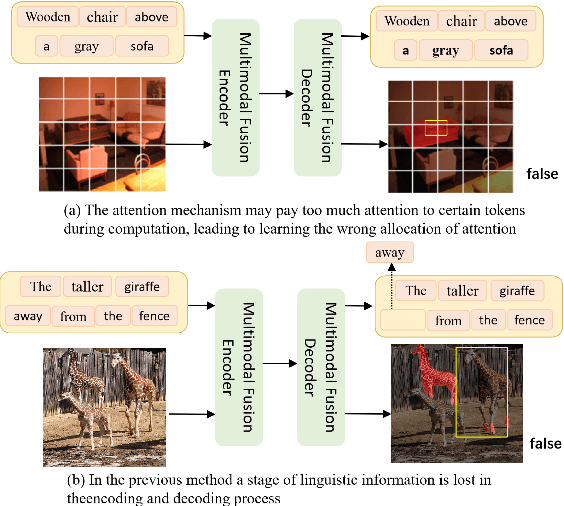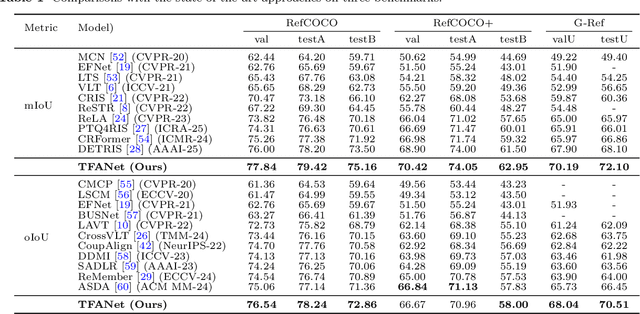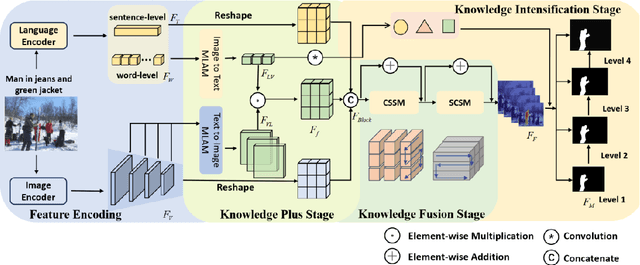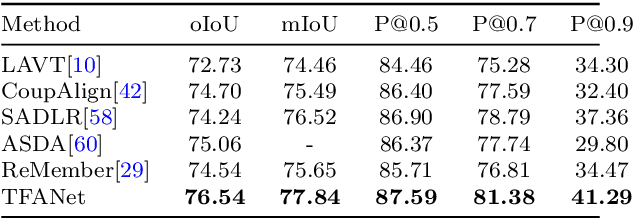Jing Zhang
The University of Sydney, Australia
Residual Diffusion Bridge Model for Image Restoration
Oct 27, 2025Abstract:Diffusion bridge models establish probabilistic paths between arbitrary paired distributions and exhibit great potential for universal image restoration. Most existing methods merely treat them as simple variants of stochastic interpolants, lacking a unified analytical perspective. Besides, they indiscriminately reconstruct images through global noise injection and removal, inevitably distorting undegraded regions due to imperfect reconstruction. To address these challenges, we propose the Residual Diffusion Bridge Model (RDBM). Specifically, we theoretically reformulate the stochastic differential equations of generalized diffusion bridge and derive the analytical formulas of its forward and reverse processes. Crucially, we leverage the residuals from given distributions to modulate the noise injection and removal, enabling adaptive restoration of degraded regions while preserving intact others. Moreover, we unravel the fundamental mathematical essence of existing bridge models, all of which are special cases of RDBM and empirically demonstrate the optimality of our proposed models. Extensive experiments are conducted to demonstrate the state-of-the-art performance of our method both qualitatively and quantitatively across diverse image restoration tasks. Code is publicly available at https://github.com/MiliLab/RDBM.
PaddleOCR-VL: Boosting Multilingual Document Parsing via a 0.9B Ultra-Compact Vision-Language Model
Oct 16, 2025Abstract:In this report, we propose PaddleOCR-VL, a SOTA and resource-efficient model tailored for document parsing. Its core component is PaddleOCR-VL-0.9B, a compact yet powerful vision-language model (VLM) that integrates a NaViT-style dynamic resolution visual encoder with the ERNIE-4.5-0.3B language model to enable accurate element recognition. This innovative model efficiently supports 109 languages and excels in recognizing complex elements (e.g., text, tables, formulas, and charts), while maintaining minimal resource consumption. Through comprehensive evaluations on widely used public benchmarks and in-house benchmarks, PaddleOCR-VL achieves SOTA performance in both page-level document parsing and element-level recognition. It significantly outperforms existing solutions, exhibits strong competitiveness against top-tier VLMs, and delivers fast inference speeds. These strengths make it highly suitable for practical deployment in real-world scenarios.
Next-Generation AI-Native Wireless Communications: MCMC-Based Receiver Architectures for Unified Processing
Oct 02, 2025Abstract:The multiple-input multiple-output (MIMO) receiver processing is a key technology for current and next-generation wireless communications. However, it faces significant challenges related to complexity and scalability as the number of antennas increases. Artificial intelligence (AI), a cornerstone of next-generation wireless networks, offers considerable potential for addressing these challenges. This paper proposes an AI-driven, universal MIMO receiver architecture based on Markov chain Monte Carlo (MCMC) techniques. Unlike existing AI-based methods that treat receiver processing as a black box, our MCMC-based approach functions as a generic Bayesian computing engine applicable to various processing tasks, including channel estimation, symbol detection, and channel decoding. This method enhances the interpretability, scalability, and flexibility of receivers in diverse scenarios. Furthermore, the proposed approach integrates these tasks into a unified probabilistic framework, thereby enabling overall performance optimization. This unified framework can also be seamlessly combined with data-driven learning methods to facilitate the development of fully intelligent communication receivers.
Unlocking Vision-Language Models for Video Anomaly Detection via Fine-Grained Prompting
Oct 02, 2025Abstract:Prompting has emerged as a practical way to adapt frozen vision-language models (VLMs) for video anomaly detection (VAD). Yet, existing prompts are often overly abstract, overlooking the fine-grained human-object interactions or action semantics that define complex anomalies in surveillance videos. We propose ASK-Hint, a structured prompting framework that leverages action-centric knowledge to elicit more accurate and interpretable reasoning from frozen VLMs. Our approach organizes prompts into semantically coherent groups (e.g. violence, property crimes, public safety) and formulates fine-grained guiding questions that align model predictions with discriminative visual cues. Extensive experiments on UCF-Crime and XD-Violence show that ASK-Hint consistently improves AUC over prior baselines, achieving state-of-the-art performance compared to both fine-tuned and training-free methods. Beyond accuracy, our framework provides interpretable reasoning traces towards anomaly and demonstrates strong generalization across datasets and VLM backbones. These results highlight the critical role of prompt granularity and establish ASK-Hint as a new training-free and generalizable solution for explainable video anomaly detection.
Beyond Video-to-SFX: Video to Audio Synthesis with Environmentally Aware Speech
Sep 19, 2025



Abstract:The generation of realistic, context-aware audio is important in real-world applications such as video game development. While existing video-to-audio (V2A) methods mainly focus on Foley sound generation, they struggle to produce intelligible speech. Meanwhile, current environmental speech synthesis approaches remain text-driven and fail to temporally align with dynamic video content. In this paper, we propose Beyond Video-to-SFX (BVS), a method to generate synchronized audio with environmentally aware intelligible speech for given videos. We introduce a two-stage modeling method: (1) stage one is a video-guided audio semantic (V2AS) model to predict unified audio semantic tokens conditioned on phonetic cues; (2) stage two is a video-conditioned semantic-to-acoustic (VS2A) model that refines semantic tokens into detailed acoustic tokens. Experiments demonstrate the effectiveness of BVS in scenarios such as video-to-context-aware speech synthesis and immersive audio background conversion, with ablation studies further validating our design. Our demonstration is available at~\href{https://xinleiniu.github.io/BVS-demo/}{BVS-Demo}.
FMGS-Avatar: Mesh-Guided 2D Gaussian Splatting with Foundation Model Priors for 3D Monocular Avatar Reconstruction
Sep 18, 2025Abstract:Reconstructing high-fidelity animatable human avatars from monocular videos remains challenging due to insufficient geometric information in single-view observations. While recent 3D Gaussian Splatting methods have shown promise, they struggle with surface detail preservation due to the free-form nature of 3D Gaussian primitives. To address both the representation limitations and information scarcity, we propose a novel method, \textbf{FMGS-Avatar}, that integrates two key innovations. First, we introduce Mesh-Guided 2D Gaussian Splatting, where 2D Gaussian primitives are attached directly to template mesh faces with constrained position, rotation, and movement, enabling superior surface alignment and geometric detail preservation. Second, we leverage foundation models trained on large-scale datasets, such as Sapiens, to complement the limited visual cues from monocular videos. However, when distilling multi-modal prior knowledge from foundation models, conflicting optimization objectives can emerge as different modalities exhibit distinct parameter sensitivities. We address this through a coordinated training strategy with selective gradient isolation, enabling each loss component to optimize its relevant parameters without interference. Through this combination of enhanced representation and coordinated information distillation, our approach significantly advances 3D monocular human avatar reconstruction. Experimental evaluation demonstrates superior reconstruction quality compared to existing methods, with notable gains in geometric accuracy and appearance fidelity while providing rich semantic information. Additionally, the distilled prior knowledge within a shared canonical space naturally enables spatially and temporally consistent rendering under novel views and poses.
TFANet: Three-Stage Image-Text Feature Alignment Network for Robust Referring Image Segmentation
Sep 16, 2025



Abstract:Referring Image Segmentation (RIS) is a task that segments image regions based on language expressions, requiring fine-grained alignment between two modalities. However, existing methods often struggle with multimodal misalignment and language semantic loss, especially in complex scenes containing multiple visually similar objects, where uniquely described targets are frequently mislocalized or incompletely segmented. To tackle these challenges, this paper proposes TFANet, a Three-stage Image-Text Feature Alignment Network that systematically enhances multimodal alignment through a hierarchical framework comprising three stages: Knowledge Plus Stage (KPS), Knowledge Fusion Stage (KFS), and Knowledge Intensification Stage (KIS). In the first stage, we design the Multiscale Linear Cross-Attention Module (MLAM), which facilitates bidirectional semantic exchange between visual features and textual representations across multiple scales. This establishes rich and efficient alignment between image regions and different granularities of linguistic descriptions. Subsequently, the KFS further strengthens feature alignment through the Cross-modal Feature Scanning Module (CFSM), which applies multimodal selective scanning to capture long-range dependencies and construct a unified multimodal representation. This is essential for modeling long-range cross-modal dependencies and enhancing alignment accuracy in complex scenes. Finally, in the KIS, we propose the Word-level Linguistic Feature-guided Semantic Deepening Module (WFDM) to compensate for semantic degradation introduced in earlier stages.
Patch Progression Masked Autoencoder with Fusion CNN Network for Classifying Evolution Between Two Pairs of 2D OCT Slices
Aug 27, 2025Abstract:Age-related Macular Degeneration (AMD) is a prevalent eye condition affecting visual acuity. Anti-vascular endothelial growth factor (anti-VEGF) treatments have been effective in slowing the progression of neovascular AMD, with better outcomes achieved through timely diagnosis and consistent monitoring. Tracking the progression of neovascular activity in OCT scans of patients with exudative AMD allows for the development of more personalized and effective treatment plans. This was the focus of the Monitoring Age-related Macular Degeneration Progression in Optical Coherence Tomography (MARIO) challenge, in which we participated. In Task 1, which involved classifying the evolution between two pairs of 2D slices from consecutive OCT acquisitions, we employed a fusion CNN network with model ensembling to further enhance the model's performance. For Task 2, which focused on predicting progression over the next three months based on current exam data, we proposed the Patch Progression Masked Autoencoder that generates an OCT for the next exam and then classifies the evolution between the current OCT and the one generated using our solution from Task 1. The results we achieved allowed us to place in the Top 10 for both tasks. Some team members are part of the same organization as the challenge organizers; therefore, we are not eligible to compete for the prize.
* 10 pages, 5 figures, 3 tables, challenge/conference paper
Handling Students Dropouts in an LLM-driven Interactive Online Course Using Language Models
Aug 24, 2025Abstract:Interactive online learning environments, represented by Massive AI-empowered Courses (MAIC), leverage LLM-driven multi-agent systems to transform passive MOOCs into dynamic, text-based platforms, enhancing interactivity through LLMs. This paper conducts an empirical study on a specific MAIC course to explore three research questions about dropouts in these interactive online courses: (1) What factors might lead to dropouts? (2) Can we predict dropouts? (3) Can we reduce dropouts? We analyze interaction logs to define dropouts and identify contributing factors. Our findings reveal strong links between dropout behaviors and textual interaction patterns. We then propose a course-progress-adaptive dropout prediction framework (CPADP) to predict dropouts with at most 95.4% accuracy. Based on this, we design a personalized email recall agent to re-engage at-risk students. Applied in the deployed MAIC system with over 3,000 students, the feasibility and effectiveness of our approach have been validated on students with diverse backgrounds.
Structural Energy-Guided Sampling for View-Consistent Text-to-3D
Aug 23, 2025Abstract:Text-to-3D generation often suffers from the Janus problem, where objects look correct from the front but collapse into duplicated or distorted geometry from other angles. We attribute this failure to viewpoint bias in 2D diffusion priors, which propagates into 3D optimization. To address this, we propose Structural Energy-Guided Sampling (SEGS), a training-free, plug-and-play framework that enforces multi-view consistency entirely at sampling time. SEGS defines a structural energy in a PCA subspace of intermediate U-Net features and injects its gradients into the denoising trajectory, steering geometry toward the intended viewpoint while preserving appearance fidelity. Integrated seamlessly into SDS/VSD pipelines, SEGS significantly reduces Janus artifacts, achieving improved geometric alignment and viewpoint consistency without retraining or weight modification.
 Add to Chrome
Add to Chrome Add to Firefox
Add to Firefox Add to Edge
Add to Edge